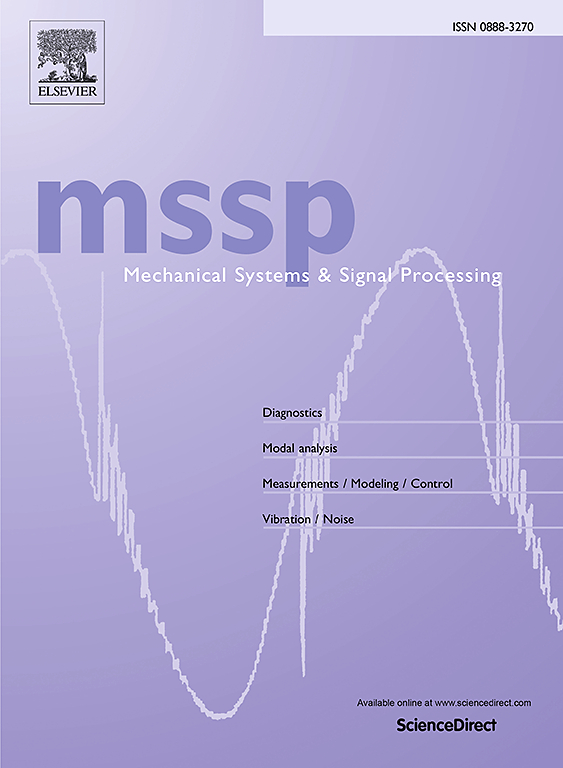Wave propagation characteristics of controllable gyroscopic chiral metamaterials
IF 7.9
1区 工程技术
Q1 ENGINEERING, MECHANICAL
引用次数: 0
Abstract
This paper investigates the dispersion characteristics and wave propagation of triangular and concave hexagonal gyroscopic metamaterials. The theory derivations of the dispersion relations are presented and validated through numerical simulations. Group velocity, phase velocity, and wave transmission with different gyroscope torques are analyzed, revealing how the gyroscope torque influences the wave propagation characteristics in the triangular structures. The results indicate that the gyroscope torque breaks the time inverse symmetry, inducing chirality in the triangular structure, and wave predominantly propagates along the spring direction on both low and high frequency dispersion surfaces. On this basis, the concave hexagonal gyroscopic metamaterial is proposed by introducing a transverse long spring, which exhibits two geometric special nodes. Four distinct dispersion surfaces with unique propagation characteristics are generated in the analysis of wave propagation. It is found that the propagation intensity on the first and second dispersion surfaces is highly sensitive to the direction of the gyroscope torque, while wave propagation characteristics of the third and fourth dispersion surfaces exhibit an opposite relationship, in which the Dirac cone is discovered. These findings emphasize that varying the gyroscope torque can achieve the same wave propagation characteristics with different frequencies or change wave propagation with the same frequencies, offering valuable insights for designing metamaterial structures with precise torque distribution control.
可控陀螺手性超材料的波传播特性
本文研究了三角形和凹六边形陀螺超材料的色散特性和波的传播。给出了色散关系的理论推导,并通过数值模拟进行了验证。分析了不同陀螺仪转矩下的群速度、相速度和波的传播情况,揭示了陀螺仪转矩对波在三角形结构中的传播特性的影响。结果表明,陀螺转矩打破了时间逆对称,在三角形结构中产生手性,波在低频和高频色散表面上主要沿弹簧方向传播。在此基础上,通过引入具有两个几何特殊节点的横向长弹簧,提出了凹六角陀螺仪超材料。在波的传播分析中,产生了四种具有独特传播特性的色散面。结果表明,第一和第二色散面上的传播强度对陀螺仪转矩方向高度敏感,而第三和第四色散面上的波传播特性与之相反,其中发现了狄拉克锥。这些发现强调了改变陀螺仪转矩可以实现不同频率下相同的波传播特性或改变相同频率下的波传播,为设计具有精确转矩分布控制的超材料结构提供了有价值的见解。
本文章由计算机程序翻译,如有差异,请以英文原文为准。
求助全文
约1分钟内获得全文
求助全文
来源期刊

Mechanical Systems and Signal Processing
工程技术-工程:机械
CiteScore
14.80
自引率
13.10%
发文量
1183
审稿时长
5.4 months
期刊介绍:
Journal Name: Mechanical Systems and Signal Processing (MSSP)
Interdisciplinary Focus:
Mechanical, Aerospace, and Civil Engineering
Purpose:Reporting scientific advancements of the highest quality
Arising from new techniques in sensing, instrumentation, signal processing, modelling, and control of dynamic systems
 求助内容:
求助内容: 应助结果提醒方式:
应助结果提醒方式:


